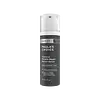What's inside
What's inside
 Key Ingredients
Key Ingredients

 Benefits
Benefits

 Concerns
Concerns

 Ingredients Side-by-side
Ingredients Side-by-side

Cyclopentasiloxane
EmollientDimethiconol
EmollientNeopentyl Glycol Diheptanoate
EmollientDicaprylyl Carbonate
EmollientCaprylic/Capric Triglyceride
MaskingPhenyl Trimethicone
Skin ConditioningSqualane
EmollientBisabolol
MaskingTetrahexyldecyl Ascorbate
AntioxidantRetinol
Skin ConditioningTocotrienols
Skin ConditioningTocopherol
AntioxidantLecithin
EmollientLaminaria Ochroleuca Extract
Skin ConditioningAvena Sativa Kernel Extract
AbrasiveElaeis Guineensis Oil
EmollientStearyl Glycyrrhetinate
Skin ConditioningHexylene Glycol
EmulsifyingCaprylyl Glycol
EmollientEthylhexylglycerin
Skin ConditioningPhenoxyethanol
PreservativeCyclopentasiloxane, Dimethiconol, Neopentyl Glycol Diheptanoate, Dicaprylyl Carbonate, Caprylic/Capric Triglyceride, Phenyl Trimethicone, Squalane, Bisabolol, Tetrahexyldecyl Ascorbate, Retinol, Tocotrienols, Tocopherol, Lecithin, Laminaria Ochroleuca Extract, Avena Sativa Kernel Extract, Elaeis Guineensis Oil, Stearyl Glycyrrhetinate, Hexylene Glycol, Caprylyl Glycol, Ethylhexylglycerin, Phenoxyethanol
Water
Skin ConditioningGlycerin
HumectantDiheptyl Succinate
EmollientCandelilla/Jojoba/Rice Bran Polyglyceryl-3 Esters
EmulsifyingLinum Usitatissimum Seed Oil
PerfumingLinoleic Acid
CleansingLinolenic Acid
CleansingPassiflora Edulis Seed Oil
EmollientCeramide EOP
Skin ConditioningCeramide Eos
Skin ConditioningCeramide NP
Skin ConditioningCeramide Ns
Skin ConditioningCaprooyl Sphingosine
Skin ConditioningOlea Europaea Oil Unsaponifiables
Skin ConditioningCaprooyl Phytosphingosine
Skin ConditioningSodium Hyaluronate
HumectantCholesterol
EmollientCeramide AP
Skin ConditioningButyrospermum Parkii Butter Unsaponifiables
Skin ConditioningTocopherol
AntioxidantHydroxyethyl Acrylate/Sodium Acryloyldimethyl Taurate Copolymer
Emulsion StabilisingPrunus Domestica Seed Oil
Skin ConditioningLauryl Laurate
Skin ConditioningGlyceryl Behenate
EmollientHydrogenated Lecithin
EmulsifyingSodium Phytate
Trehalose
HumectantIsohexadecane
EmollientSodium Stearoyl Lactylate
EmulsifyingCapryloyl Glycerin/Sebacic Acid Copolymer
Skin ConditioningXanthan Gum
EmulsifyingCetyl Alcohol
EmollientTetrahexyldecyl Ascorbate
AntioxidantAgar
MaskingGlyceryl Stearate
EmollientCeteareth-25
CleansingCetearyl Alcohol
EmollientBehenic Acid
CleansingGlyceryl Rosinate
PerfumingCitric Acid
BufferingBenzyl Alcohol
PerfumingEthylhexylglycerin
Skin ConditioningWater, Glycerin, Diheptyl Succinate, Candelilla/Jojoba/Rice Bran Polyglyceryl-3 Esters, Linum Usitatissimum Seed Oil, Linoleic Acid, Linolenic Acid, Passiflora Edulis Seed Oil, Ceramide EOP, Ceramide Eos, Ceramide NP, Ceramide Ns, Caprooyl Sphingosine, Olea Europaea Oil Unsaponifiables, Caprooyl Phytosphingosine, Sodium Hyaluronate, Cholesterol, Ceramide AP, Butyrospermum Parkii Butter Unsaponifiables, Tocopherol, Hydroxyethyl Acrylate/Sodium Acryloyldimethyl Taurate Copolymer, Prunus Domestica Seed Oil, Lauryl Laurate, Glyceryl Behenate, Hydrogenated Lecithin, Sodium Phytate, Trehalose, Isohexadecane, Sodium Stearoyl Lactylate, Capryloyl Glycerin/Sebacic Acid Copolymer, Xanthan Gum, Cetyl Alcohol, Tetrahexyldecyl Ascorbate, Agar, Glyceryl Stearate, Ceteareth-25, Cetearyl Alcohol, Behenic Acid, Glyceryl Rosinate, Citric Acid, Benzyl Alcohol, Ethylhexylglycerin
Ingredients Explained
These ingredients are found in both products.
Ingredients higher up in an ingredient list are typically present in a larger amount.
Ethylhexylglycerin (we can't pronounce this either) is commonly used as a preservative and skin softener. It is derived from glyceryl.
You might see Ethylhexylglycerin often paired with other preservatives such as phenoxyethanol. Ethylhexylglycerin has been found to increase the effectiveness of these other preservatives.
Tetrahexyldecyl Ascorbate (THD) is a stable and oil-soluble form of Vitamin C.
THD is special in that it has the ability to travel deeper into skin than traditional ascorbic acid while maintaining the same skin benefits (double win!).
Because it’s oil-soluble, THD dives deep into your skin’s fatty layers (think ceramides and cholesterol) to fight off the kind of free radicals that mess with your skin barrier. This makes it a great pair with water-based vitamin C (ascorbic acid) that mainly works on the surface.
Even at just 0.1%, THD is already showing great antioxidant activity. When used up to 2%, it helps keep your skin happy and calm, especially when it’s stressed from pollution or sun.
Want to fade dark spots or tackle hyperpigmentation? You’ll want 5% or more. Pairing it with brightening buddies like niacinamide or licorice root gives even better results. One study even used 30% THD with other brighteners and saw real results on stubborn discoloration, even in melasma-prone skin.
A note on THD: It’s has a slightly silky, oily texture and usually shows up colorless or pale yellow (though the exact shade can vary by supplier).
While you can sneak it into water-based formulas, it really shines when paired with silicones or oils, which help your skin soak it up better.
THD is pretty stable, but it’s still vulnerable to degradation like ascorbic acid. Too much light or heat (above 113°F / 45°C) can break it down over time. Go for dark and opaque packaging that keeps it safe and shady!
Read more about other types of Vitamin C:
Learn more about Tetrahexyldecyl AscorbateTocopherol (also known as Vitamin E) is a common antioxidant used to help protect the skin from free-radicals and strengthen the skin barrier. It's also fat soluble - this means our skin is great at absorbing it.
Vitamin E also helps keep your natural skin lipids healthy. Your lipid skin barrier naturally consists of lipids, ceramides, and fatty acids. Vitamin E offers extra protection for your skin’s lipid barrier, keeping your skin healthy and nourished.
Another benefit is a bit of UV protection. Vitamin E helps reduce the damage caused by UVB rays. (It should not replace your sunscreen). Combining it with Vitamin C can decrease sunburned cells and hyperpigmentation after UV exposure.
You might have noticed Vitamin E + C often paired together. This is because it is great at stabilizing Vitamin C. Using the two together helps increase the effectiveness of both ingredients.
There are often claims that Vitamin E can reduce/prevent scarring, but these claims haven't been confirmed by scientific research.
Learn more about Tocopherol